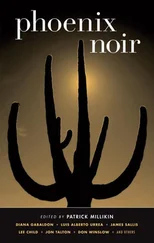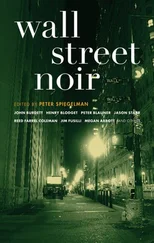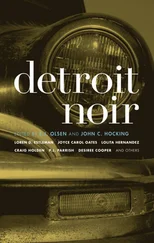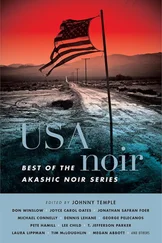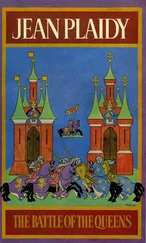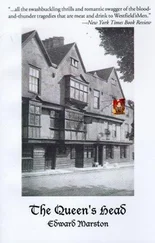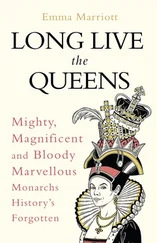Jillian Abbott's - Queens Noir
Здесь есть возможность читать онлайн «Jillian Abbott's - Queens Noir» весь текст электронной книги совершенно бесплатно (целиком полную версию без сокращений). В некоторых случаях можно слушать аудио, скачать через торрент в формате fb2 и присутствует краткое содержание. Город: New York, Год выпуска: 2008, ISBN: 2008, Издательство: Akashic Books, Жанр: Детектив, на английском языке. Описание произведения, (предисловие) а так же отзывы посетителей доступны на портале библиотеки ЛибКат.
- Название:Queens Noir
- Автор:
- Издательство:Akashic Books
- Жанр:
- Год:2008
- Город:New York
- ISBN:978-1-933354-40-8
- Рейтинг книги:5 / 5. Голосов: 1
-
Избранное:Добавить в избранное
- Отзывы:
-
Ваша оценка:
- 100
- 1
- 2
- 3
- 4
- 5
Queens Noir: краткое содержание, описание и аннотация
Предлагаем к чтению аннотацию, описание, краткое содержание или предисловие (зависит от того, что написал сам автор книги «Queens Noir»). Если вы не нашли необходимую информацию о книге — напишите в комментариях, мы постараемся отыскать её.
Queens Noir — читать онлайн бесплатно полную книгу (весь текст) целиком
Ниже представлен текст книги, разбитый по страницам. Система сохранения места последней прочитанной страницы, позволяет с удобством читать онлайн бесплатно книгу «Queens Noir», без необходимости каждый раз заново искать на чём Вы остановились. Поставьте закладку, и сможете в любой момент перейти на страницу, на которой закончили чтение.
Интервал:
Закладка:
Queens Noir
To the women in my life: my beloved wife Rose, without whom this book would still be a thought;
and my precious sisters, Maureen and Lillian.
Introduction
Queens has attitude

Queens is New York City’s biggest borough, with the most parks and cemeteries, both major airports, Shea Stadium, the city’s only racetrack, and 150 languages spoken by more foreign-born residents than live anywhere else in the U.S. No wonder Queens has attitude. And plenty of noir to go around. That’s the premise of Queens Noir. I chose these nineteen authors for their solid connections to the borough, not to mention their skewed worldviews. This introduction is organized as a tour of the neighborhoods. It begins at the point where a traveler from Manhattan touches down in Queens.
Leave Manhattan (a.k.a., New York City to Outlanders) and drive over the Queensboro Bridge (a.k.a., the 59th Street Bridge) that spans the East River. Take the outer roadbed; on your descent, mark the Citicorp Building (Queens’ only skyscraper) looming on your right; then, close in, the Silvercup Studios sign big and in your face as you touch down in Long Island City. Overhead is the rotting steel skeleton of beams and girders that support the elevated tracks for the N, W, and 7 subway lines, all converging at the Queensboro Plaza station. The 7 line is sometimes called the Orient Express: Of the 2.2 million souls in Queens, forty-eight percent are foreign-born, the majority Asian.
Look around this commercial hub. Seedy Queens Central. Note City Scapes and the other two “gentlemen’s clubs” within three blocks. At night, the strip joints are lit in neon; prostitutes work the johns on Queens Plaza South and across the roadway on Queens Plaza North; all-night donut shops give sustenance; the bus from the Rikers Island jails disgorges discharged inmates at the bus stop at 3 a.m. every weekday. Yet Queens politicians are talking a bright future for Queensboro Plaza, involving $1.2 billion to be invested in development here and on the Long Island City waterfront across the river from Manhattan. And Silvercup — formerly a baker of bread, now a purveyor of illusions — is leading the pack. Here, in Queens Noir , you can visit the movie lots and TV studios with actress-writer Kim Sykes’s Josephine, a security guard in “Arrivederci, Aldo.”
Continue up Queens Plaza South till it intersects with Queens Plaza, Northern Boulevard, and Jackson Avenue. As you turn right onto Jackson, catch in your rearview mirror the clock-face tower of the Bridge Plaza Tech Center, previously named the Brewster Building — built in 1910 to make horse-drawn carriages — looming above and behind the elevated train tracks (it’s our cover photo). Proceed a ways down the avenue to the core of old Long Island City with its fine Italian-American restaurants, wood-frame aluminum-sided homes, and factories chockablock with the ateliers of the arrivistes. Make a left onto the Pulaski drawbridge over the Newtown Creek into Polish Greenpoint, Brooklyn. Take a left at the foot of the bridge onto Greenpoint Avenue, then you’re riding alongside the creek but it’s hidden from view by the huge wastewater treatment plant, which may or may not be making a difference. Note the stink. (Greenpoint has always stunk.) Continue over the Greenpoint Avenue drawbridge — a hop, skip, and a jump — into Blissville, Queens.
Blissville is a four-square-block neighborhood bounded by Van Dam Street to the west, the Long Island Expressway to the north and east, and First Calvary Cemetery to the south. First Calvary was opened by St. Patrick’s Cathedral in 1846 to take in the poor Irish who had become too many to be laid down in Manhattan. “There are more dead in Queens than alive.” (This classically noir line is Ellen Freudenheim’s in her fine guidebook, Queens — told me things I didn’t know and reminded me of what I’d forgotten.) Having spent my first forty-four years across the waters in Greenpoint and having worked one summer digging graves in First Calvary (a much sought-after position), I was led to write my story in this volume about the ghosts that can haunt even a very young life, shadowed by the high stone walls of First Calvary.
Take Greenpoint Avenue east through small-town Sunnyside till it becomes Roosevelt Avenue, and continue on, with the 7 train overhead on the elevated tracks. Roosevelt Avenue is a main east-west road that passes through the heart of Woodside, Jackson Heights, and Corona — Queens’ version of the Casbah. Tibetans, Irish, Mexicans, Filipinos, Colombians, Ecuadorians, Koreans, Indians, Bangladeshis hawk food, clothing, jewelry, appliances, phone cards, forged or stolen drivers’ licenses, phony Social Security cards — from storefronts, pushcarts, stalls, alleyways, doorways, street corners. The denizens of the Casbah, and the 100,000 bill-paying customers of Con Edison in Astoria, Woodside, Sunnyside, and Long Island City were left in the dark when the Con Ed generators blew on July 17, 2006 during a heat wave. The blackout lasted ten days. Author Liz Martínez records the terrible consequences for one compulsive shopper in “Lights Out for Frankie.”
Detour to the north on the Brooklyn-Queens Expressway (BQE) to nearby Astoria and Ditmars: the Greek lands. Other settlers include Egyptians, Italians, Bangladeshis, Bosnians, and a mélange of artists and young people fleeing Manhattan rents. The Kaufman Astoria Studios at 36th Street and Thirty-Fourth Avenue have been making movies for ninety years. They were busy in the late 1920s while one block away the Irish were taking over the bars from the Germans who had preceded them. In “Only the Strong Survive,” Mary Byrne spins an old Irish morality tale with more twists and turns than an Irish country road. Moral: Bar owner is a perilous profession.
The neighborhood jewel of Ditmars is Astoria Park and its landmark pool that lets in 3,000 on a summer’s day. The park sits on the shore under the Triborough Bridge and along the Hell Gate channel, the most turbulent and deepest water in the New York Harbor. In “Last Stop, Ditmars,” Tori Carrington has situated the Acropolis Diner at the intersection of Ditmars Boulevard and 31st Street underneath the last stop on the N line. It’s a small domestic Greek tragedy: Think Arthur Miller’s A View from the Bridge .
Hop back on the BQE at Astoria Boulevard and then get off at Roosevelt Avenue/74th Street. You’re now in Jackson Heights, in the epicenter of Little India. Visit the Jackson Diner for a masala dosa , check out the gold emporiums, pick up the latest Bollywood flick at the video store. In Shailly Agnihotri’s droll tale, “Avoid Agony,” you can walk in the footsteps of Raj Kumar, who runs the only astrological readings/matrimonial investigations agency on the street. Raj, from his office above a sari shop, looks to the heavens for direction while trolling for prey on the Internet.
Continue up Roosevelt to Junction Boulevard and you cross into Corona: Colombians, Argentinians, Brazilians, Koreans, Mexicans, Ecuadorians pack the streets and the stores; the predominant sounds are dialects of Spanish and Portugese. Corona is on the doorstep of Shea Stadium, a stop or two away on the 7. K.j.a.Wishnia’s female P.I., Filomena Buscarsela, is tight with her Ecuadorian neighbors. The neighborhood is awash in Mets fever, as well as diluted antibiotics peddled from local farmacias and botánicas that have caused a boy’s death. Filomena, tracking their source, is on everybody’s case in “Viernes Loco.”
Читать дальшеИнтервал:
Закладка:
Похожие книги на «Queens Noir»
Представляем Вашему вниманию похожие книги на «Queens Noir» списком для выбора. Мы отобрали схожую по названию и смыслу литературу в надежде предоставить читателям больше вариантов отыскать новые, интересные, ещё непрочитанные произведения.
Обсуждение, отзывы о книге «Queens Noir» и просто собственные мнения читателей. Оставьте ваши комментарии, напишите, что Вы думаете о произведении, его смысле или главных героях. Укажите что конкретно понравилось, а что нет, и почему Вы так считаете.



